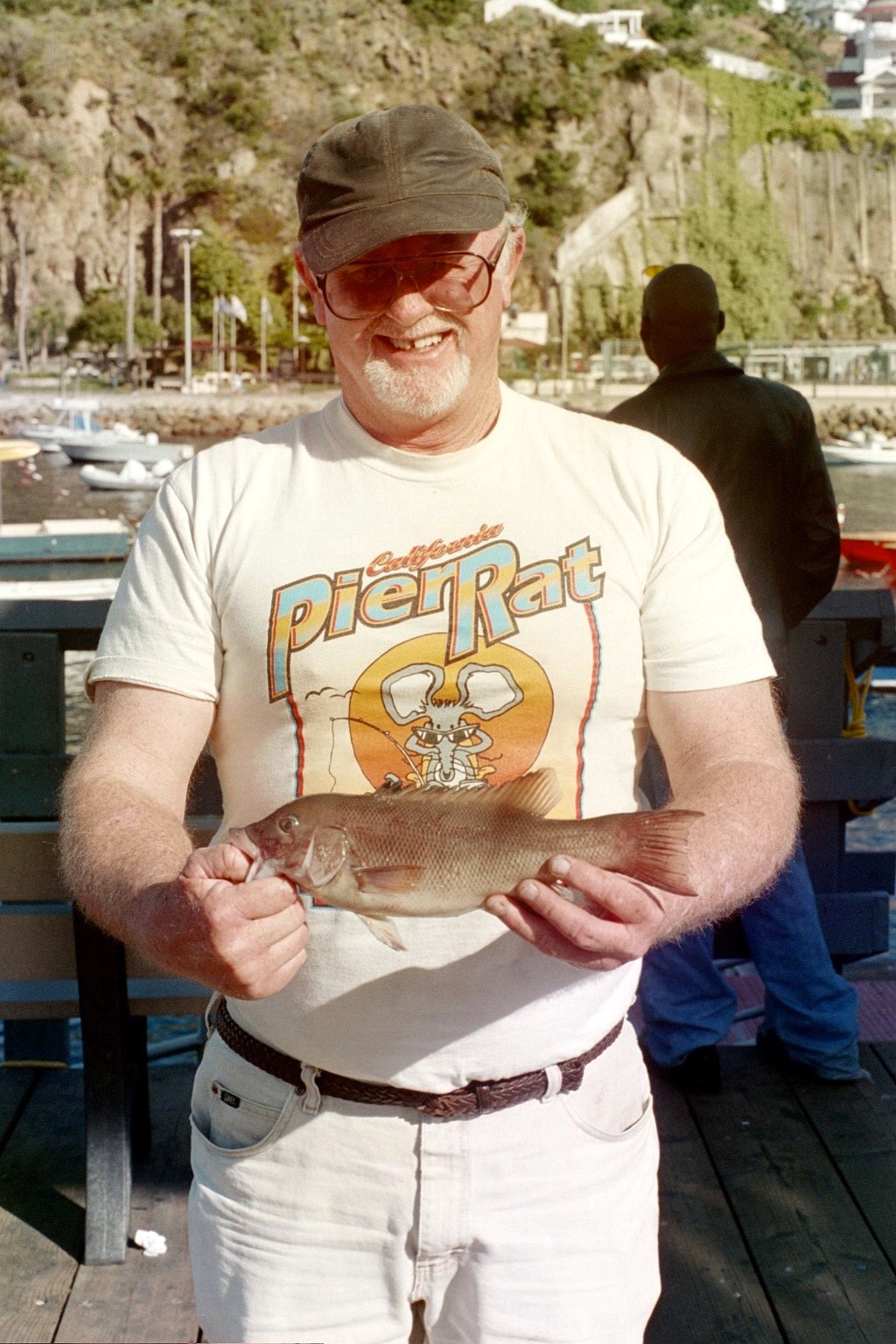
A small sheephead caught by Pierhead (Boyd Grant)
Joining in the fun, typically if fishing on the bottom, will be some other fish such as sculpin (California scorpionfish) and ocean whitefish while an occasional perch may also show, usually a black seaperch. Mid-water depths will often see jacksmelt and jack mackerel while Pacific mackerel and bonito make an occasional appearance.
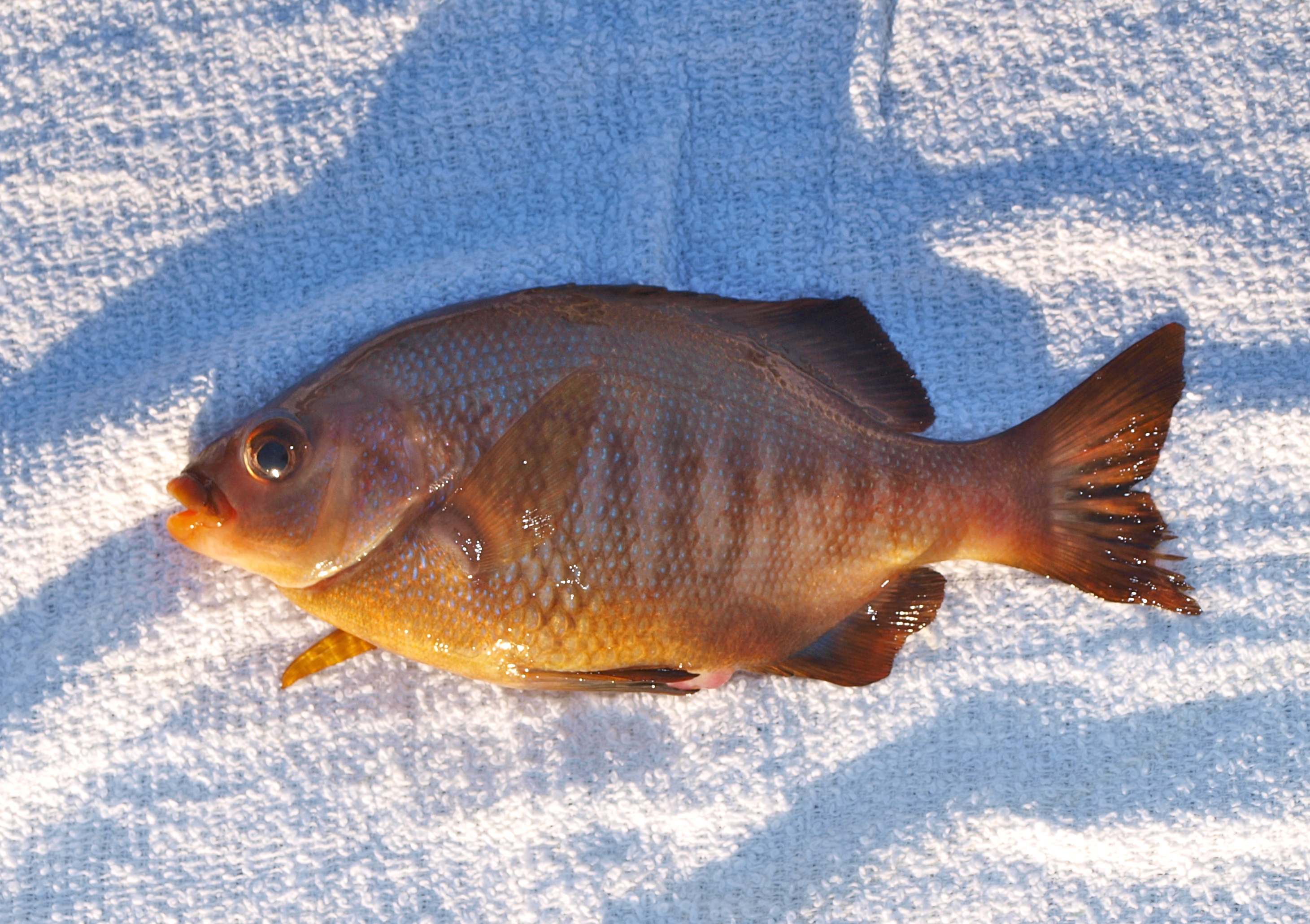
Blackperch are occasionally caught
A tried and true tradition at Catalina is chumming for fish and several options work well on the pier. One is to use bread or pizza dough. Dampen the bread, break it into small pieces, and form small balls before dropping the chum into the water. Usually it will only be a few moments before smelt will appear. Generally the kinetic excitement of the smelt will act as an attractant for the other species and you will soon have a variety of fish in your spot. A second option is to simply throw some frozen peas into the water. Lastly, small pieces of fish or bait always attract other fish.
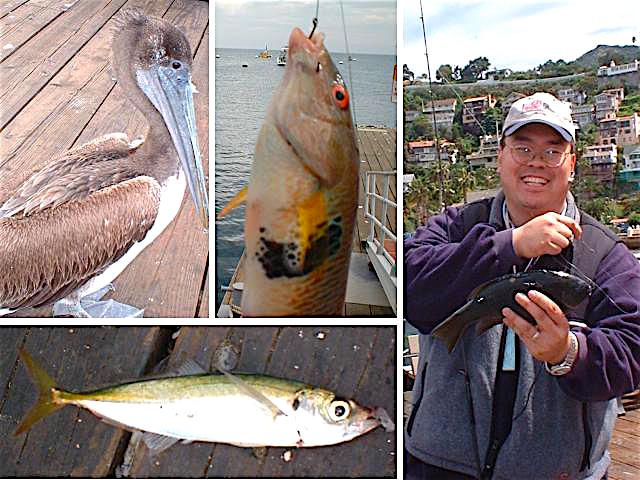
GDude (James Liu) and a variety of fish
Larger species are, of course, a possibility. Your best bet in seeking larger fish might be to try a live smelt which you have caught with a small hook (or net). Kelp bass especially like live smelt, and experts say that early morning and late evening hours can produce some of the largest, keeper-size kelp bass. If you’re lucky, a yellowtail, white seabass or halibut might even decide to swim by while your smelt is dancing its sexy little dance. You never know!
• Inshore — Because of the various buildings and floats there isn’t much open space to fish on the inner half of the pier. Nevertheless, a few anglers will find a spot and try the shallower water and it is here that you will have your best chance for a halibut. Instead of bait use a lure, generally a swim bait like a Big Hammer, and cast out with a slow retrieve. Do watch out for cables that can stretch along the bottom of the bay
• Fishing at Night — Nighttime fishing is a special attraction at the pier although it is a story with a mixed story. The beauty and personality of Avalon is enhanced after dark with the hills aglow and the multi-colored lights from homes and businesses reflected on the ocean waters.
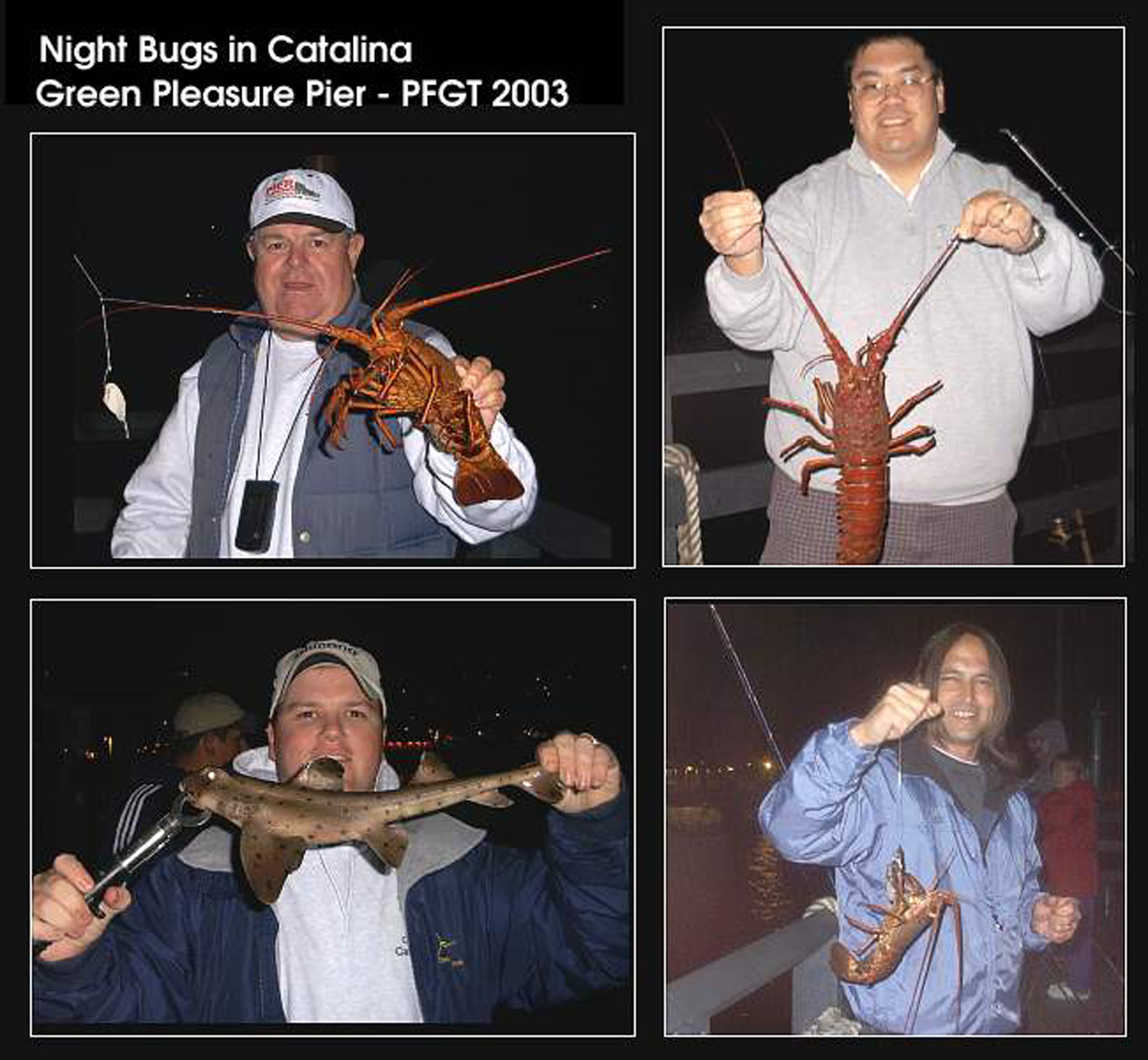
As for the fishing, it sees some changes. Several of the bottom species encountered during the day—rock wrasse, senorita, sheephead and blacksmith—just to name a few, are diurnal species that sleep or are fairly dormant at night. You will not see them.
Thus concentrate on the bass and the species that often do show up at night—Pacific mackerel (a crepuscular species that likes to bite best at sunup and sundown but also will bite well into the night), jack mackerel, California scorpionfish aka sculpin (a nocturnal or nighttime species), and sharks and bat rays (nocturnal species).
Big bass will come out from under the pier’s protection at night and bait (anchovies and cut mackerel) as well as artificials will catch them in quantity although perhaps somewhat less numbers than during the day. Scorpionfish will also hit anchovies but prefer a nice strip of squid and are common at night.
Mackerel and other pelagic species will swing in around the pier in pursuit of baitfish. They’re a possibility much of the year but I believe the long, sustained “mac attacks” are more common in the warm-water months.
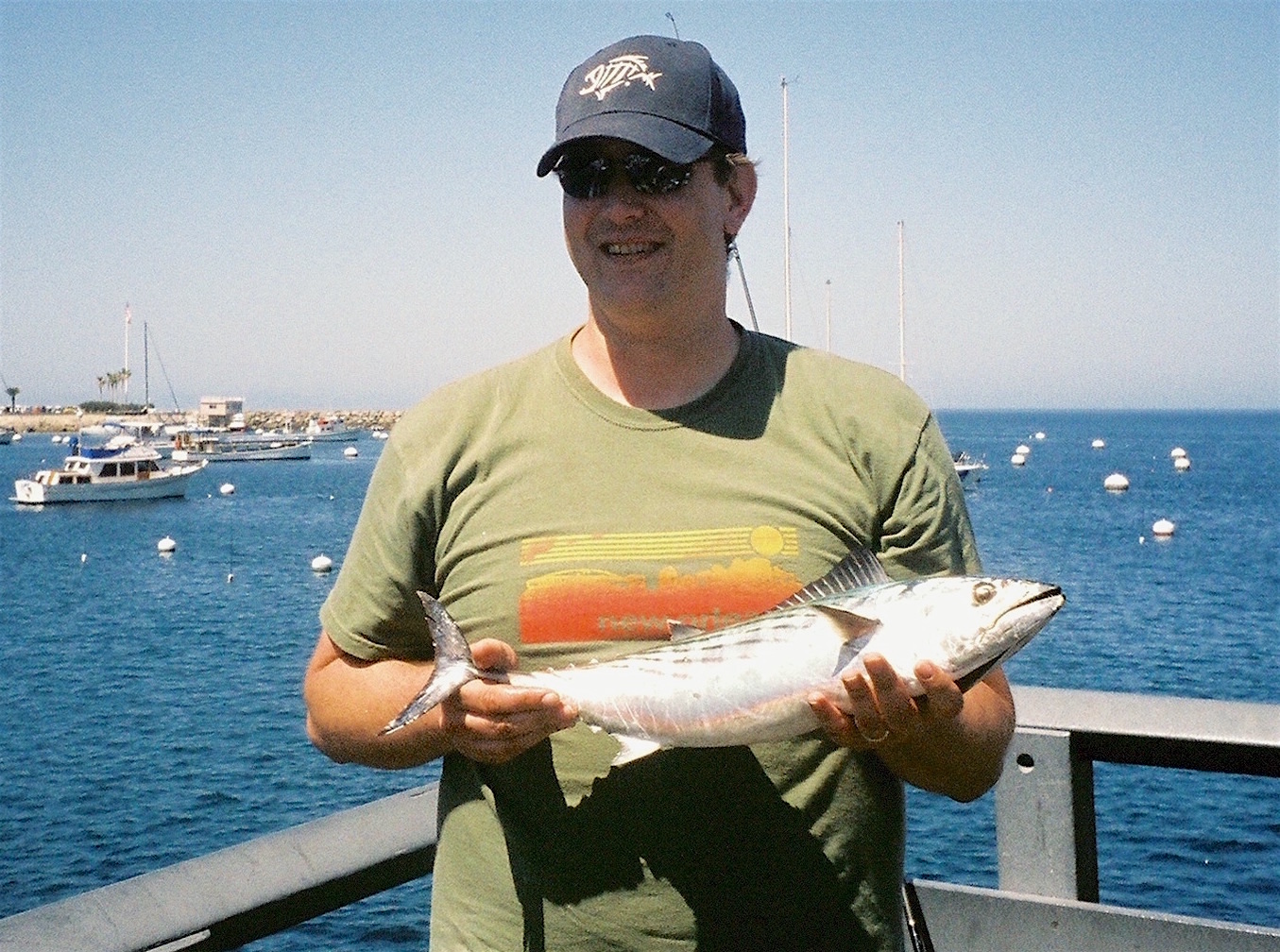
Bonito make a showing some years — Scott Geerds
The shoreline of Catalina is reported to be the best place in the state to catch another nocturnal species—moray eels, and though the Mole is the best of Avalon’s two piers for the gnarly, sharp-toothed, snake-like creatures, some will also be found at the pier. I’m convinced that some of the morays reside in the cracks and cervices under the pier and although I’ve yet to catch one here, I’m convinced they are available for the taking. If in pursuit, it’s best to fish at night and a fairly heavy outfit is needed because of all the obstructions around the pier. Use squid, piece of baby octopus, a live ghost shrimp, or a piece of market shrimp for bait and be ready to strike if an eel takes the bait. And did I mention the thousand and one obstructions around the pier?
Nighttime is by far the best time to catch the sharays, the sharks and rays. It seems a little strange since it’s fairly common to see large bat rays, many over a hundred pounds in weight, leisurely swimming around the pier during the day. It almost always elicits some excited comments when people see them and to be truthful they are they pretty interesting; they’ll just seem to glide in and out of view for several minutes to a half hour or so and then disappear. But, they always seem to ignore the fishing lines during the day. They save their energy for battles under the moon and stars.
Fairly common at night are horn sharks with their pig-like snouts. Most are small, 5-8 pound fish, but some may approach ten pounds or larger. It’s reported that at Catalina the adults move out into deeper water during the winter, but come into shallower waters during the summer. Milton Love in his book Probably More Than You Want To Know About The Fishes Of The Pacific Coast says “juveniles occur in relatively shallow (sometimes intertidal) waters, frequently on sand near reefs, often sitting in the depressions made by bat rays.” Sounds just like the area around the pier.
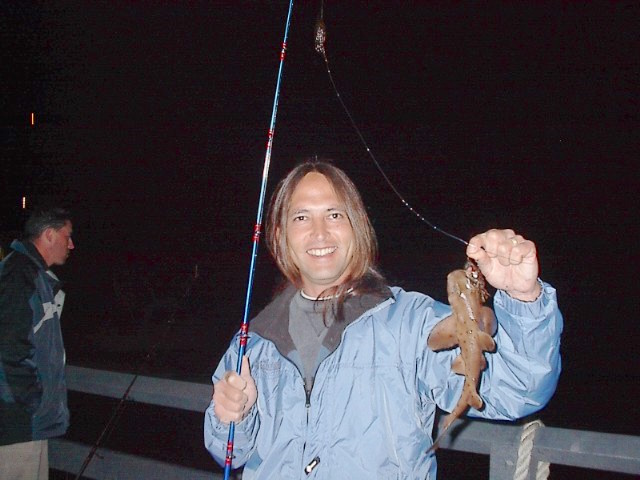
Jimbojack with a small horn shark
Which brings up the subject of those bat rays. During the “pier rat” gathering at Avalon in 2002 we fished well into the nights. On Saturday night I left early, around 10:15 P.M., and didn’t see the big bat ray that was spotted cruising the pier by those who had stayed to fish. However, the next morning I was back on the pier at 6 A.M. and a short time later managed to hook something huge (at least it seemed huge) while using my heavier rod baited up with squid. After the initial long run (characteristic of a bat ray) the fish began to sulk on the bottom. Along comes a shore boat and tangles my line on its antenna. The Harbor Master, who was watching the fight, gets him to back up and untangle the line. The fish was still hooked but had, in the meantime, wrapped the line on something—a mooring line from a nearby boat or kelp—I’m not sure. Whatever the obstacle in the water, it prevented me from bringing the fish in and after an additional five or so minutes the fish took off and the line parted. Was it a big white seabass or halibut, or maybe a throwback from Catalina’s piscatorial history, a giant black seabass? I’ll never know but I believe it was one more large bat ray lost to the elements. And, with the number of boats, mooring lines, docks and pilings under and around the pier, it probably will be a miracle if you’re able to land one of these big beasties.
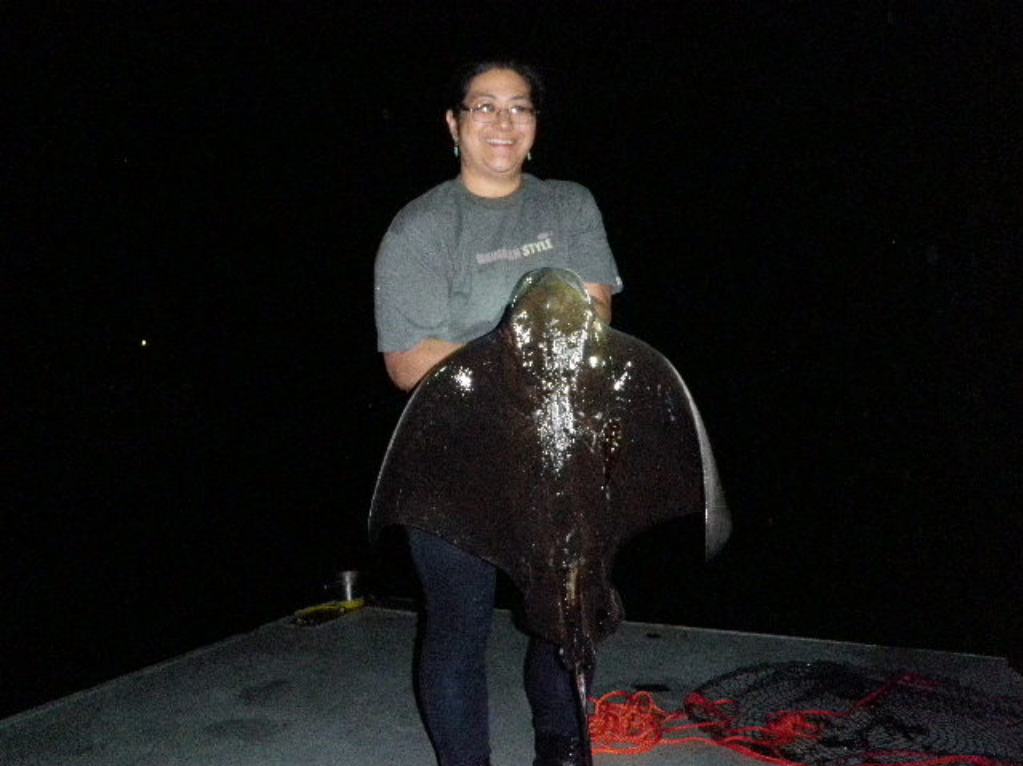
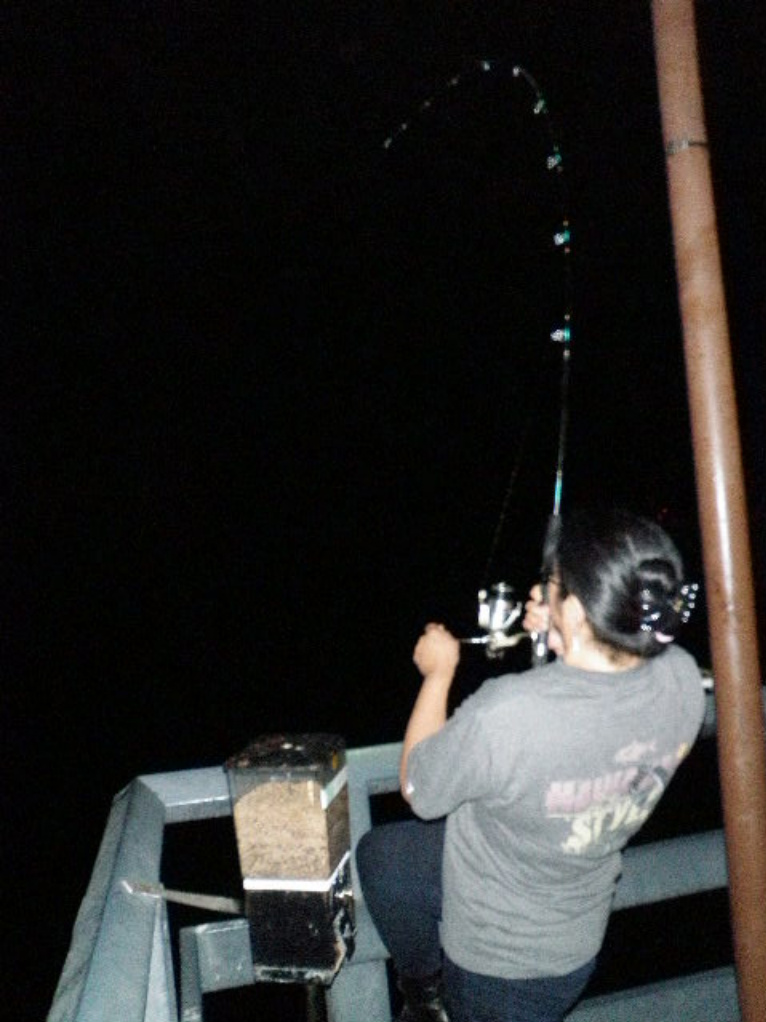
Rita M with a bat ray
Since that visit several PFIC members have fished at night for the big bat rays and several have been caught (although most have been lost). Use fairly heavy equipment, 60-80 pound braid to cut through the kelp, and have a net and friend along to help you if you get the bat ray to the pier.
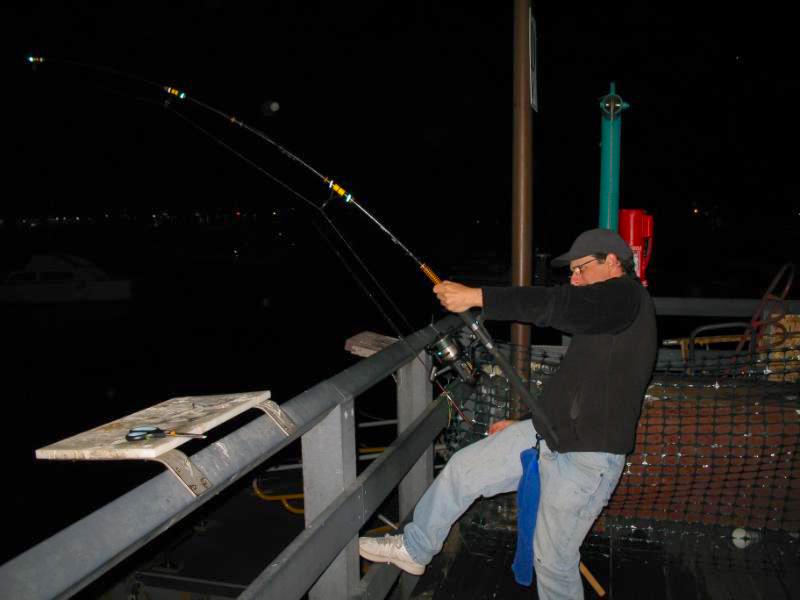
SteveO fighting a big bat ray in 2009
• Crustaceans — Once the Cabrillo Mole was ruled off limits for catching lobsters, locals and tourists who wanted to drop a hoop net down from shore became pretty limited in locations. The Green Pleasure Pier became the place of choice for most. Luckily, a lot of spiny lobsters (favorite food and sworn enemy of all morays) are taken out at the end of the pier, especially straight down among the pilings at the end and on both sides of the pier.
What experience has shown however is that the first few nights of the lobster season are by far the most productive. A lot of the resident lobsters are quickly removed from the waters and, as the season progresses, more and more of the lobsters head out to deeper waters.
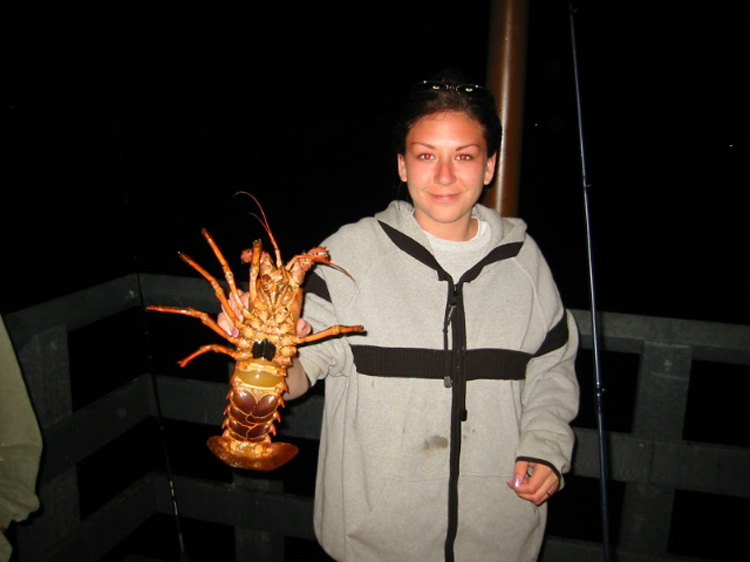
Dolphinrider (Lisa) with a lobster
Remember that is only legal to use hoop nets to take the bugs during the lobster season (the Saturday preceding the first Wednesday in October through the 15th of March) and they can be a lot of fun but make sure you use legal equipment and only keep legal-size lobsters.
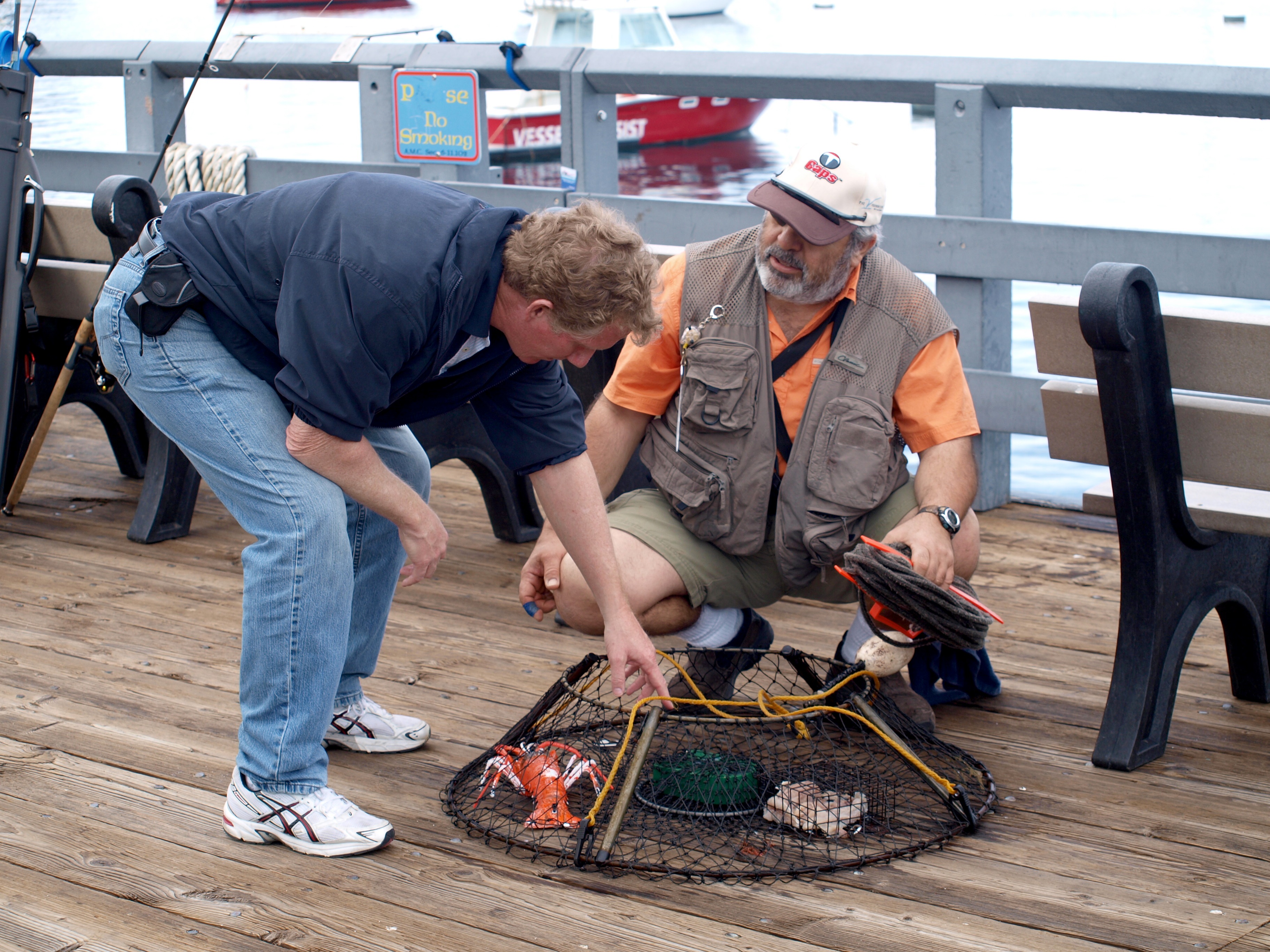
Of course some lobsters will be caught on fishing lines year round but they are simply illegal to keep due to the method of take.
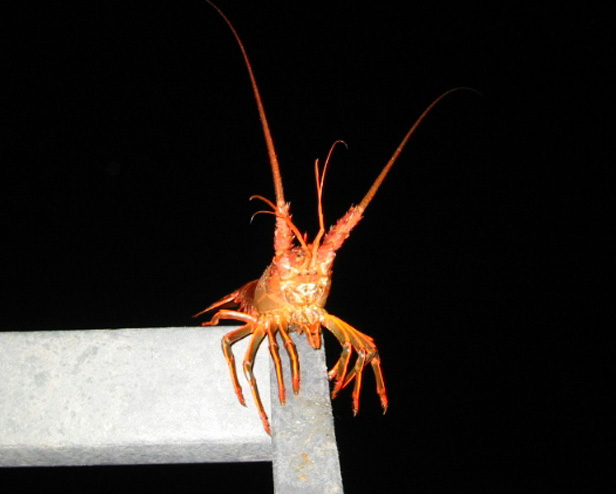
A second crustacean you may encounter at the pier, and sometimes a large-sized one, is a spider (sheep) crab. They’ll sometimes latch onto your line and you’ll wonder why your line feels like it has a heavy rock attached to it. Then you see the ugly-looking beast, covered with pieces of kelp and other assorted objects, and those long claws. Most people have no inclination to eat them (even though people who have managed to clean and prepare the gnarly beasts say they are good eating). Ugly but harmless and best returned to the water.
• Anomalies — There are some resident fish that are almost always at the Green Pleasure Pier and the Mole. There are some seasonal fish, primarily pelagic species that are most prevalent during certain times of the year. And then there are the anomalies, years when something is just different.
As example, Pacific mackerel, one of the most common fish at mainland piers almost every year only showed up in my visits to the GPP in 2002, 2003, 2009, 2011 and 2012. When present they were in large numbers and often led as far as numbers of fish caught but other years they weren’t seen.
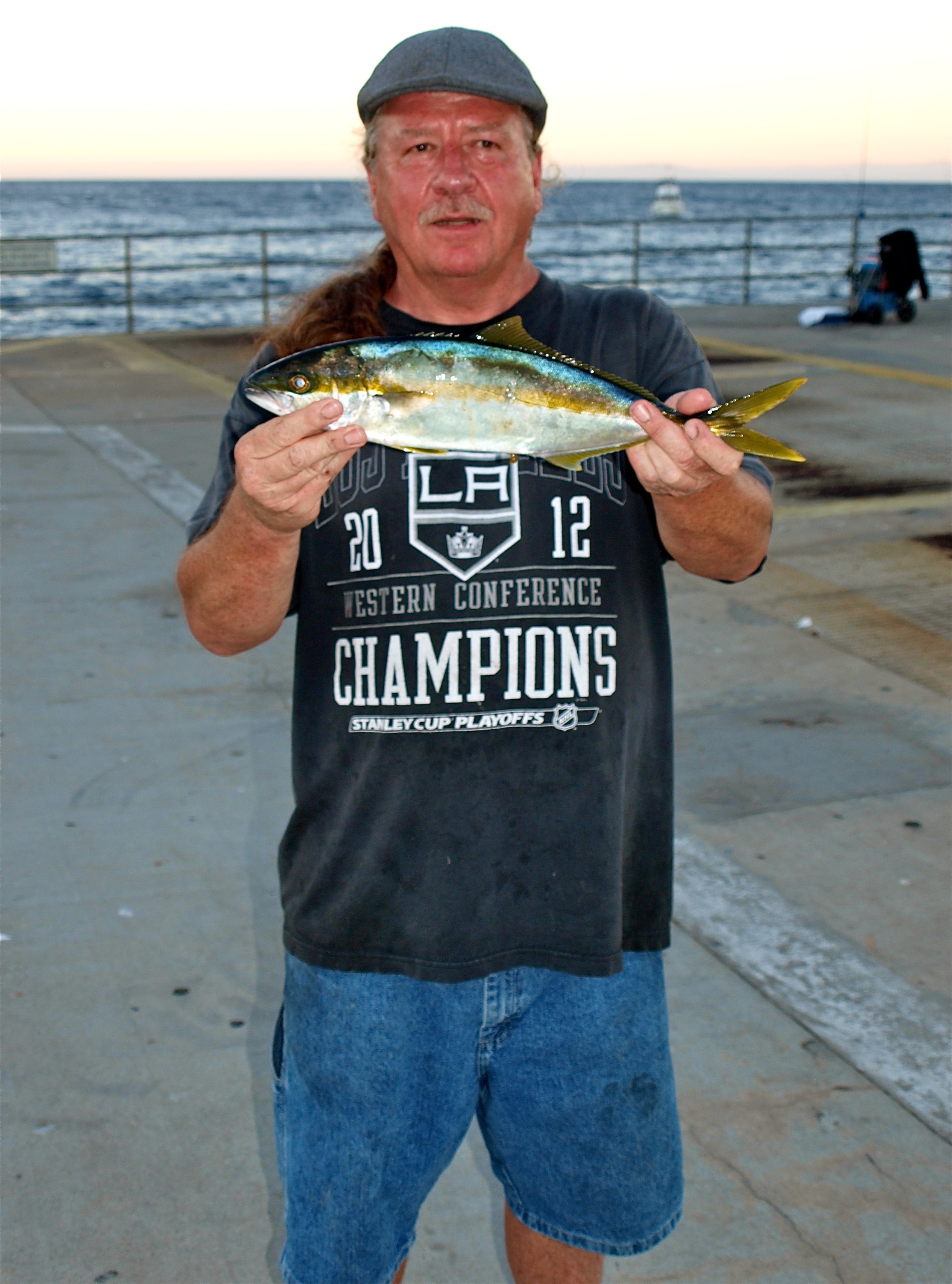
Although he’s standing on the Mole, this yellowtail was caught at the Green Pleasure Pier
Jack mackerel are almost always a fish found at the pier but usually only a few are caught. March 2010 saw big numbers of the fish and they led the tallies in numbers of fish. Blacksmith are almost always a resident species but April 2011 saw an explosion of the fish at the pier and more blacksmith were caught than any other fish.
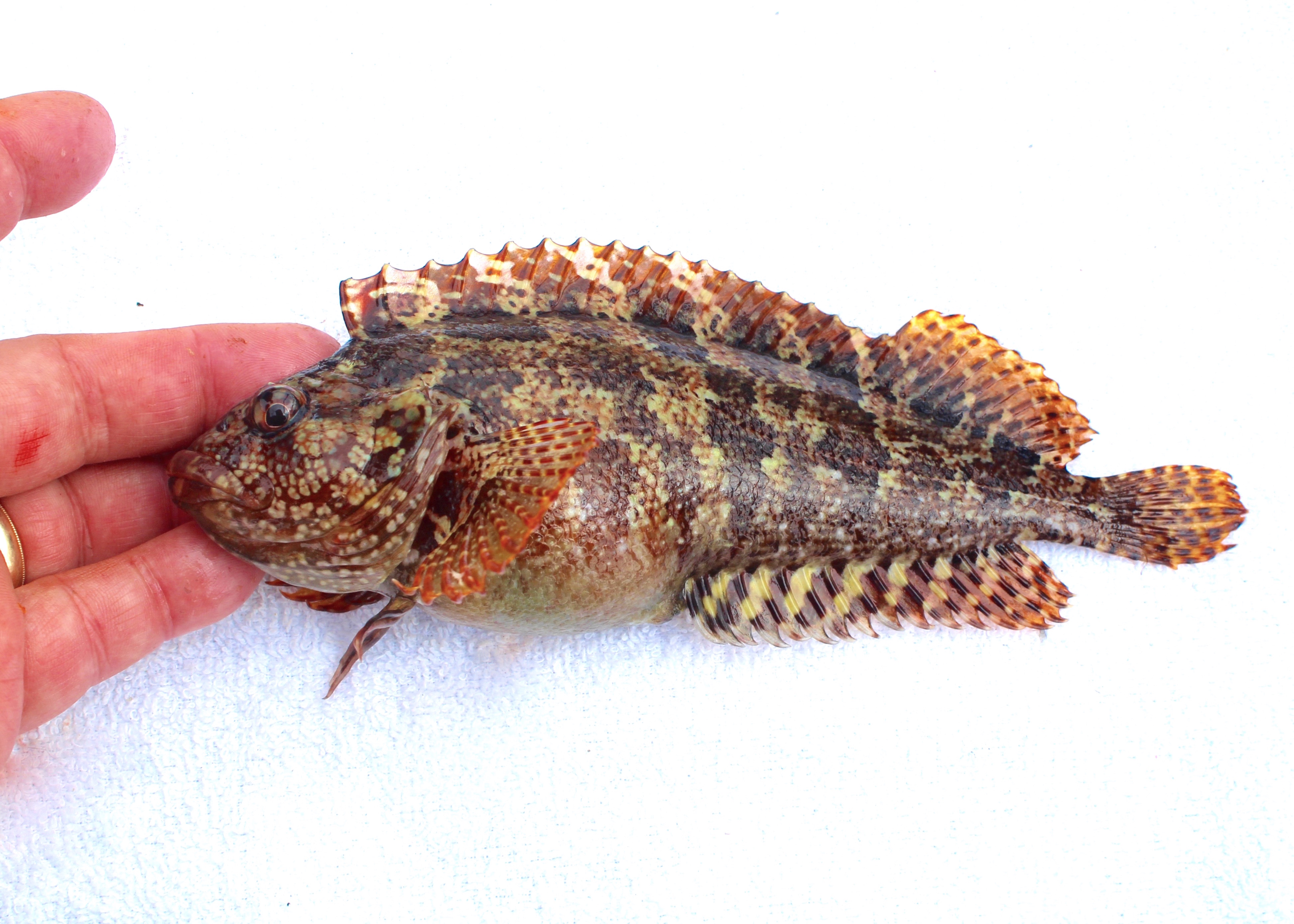
Largemouth blenny were not recorded in California until 2015. Ive caught them at both the Green Pleasure Pier and the Mole.
Shinerperch were a fish almost always seen in the mix over the years. However, I haven’t seen a shinerperch at the pier since 2007.
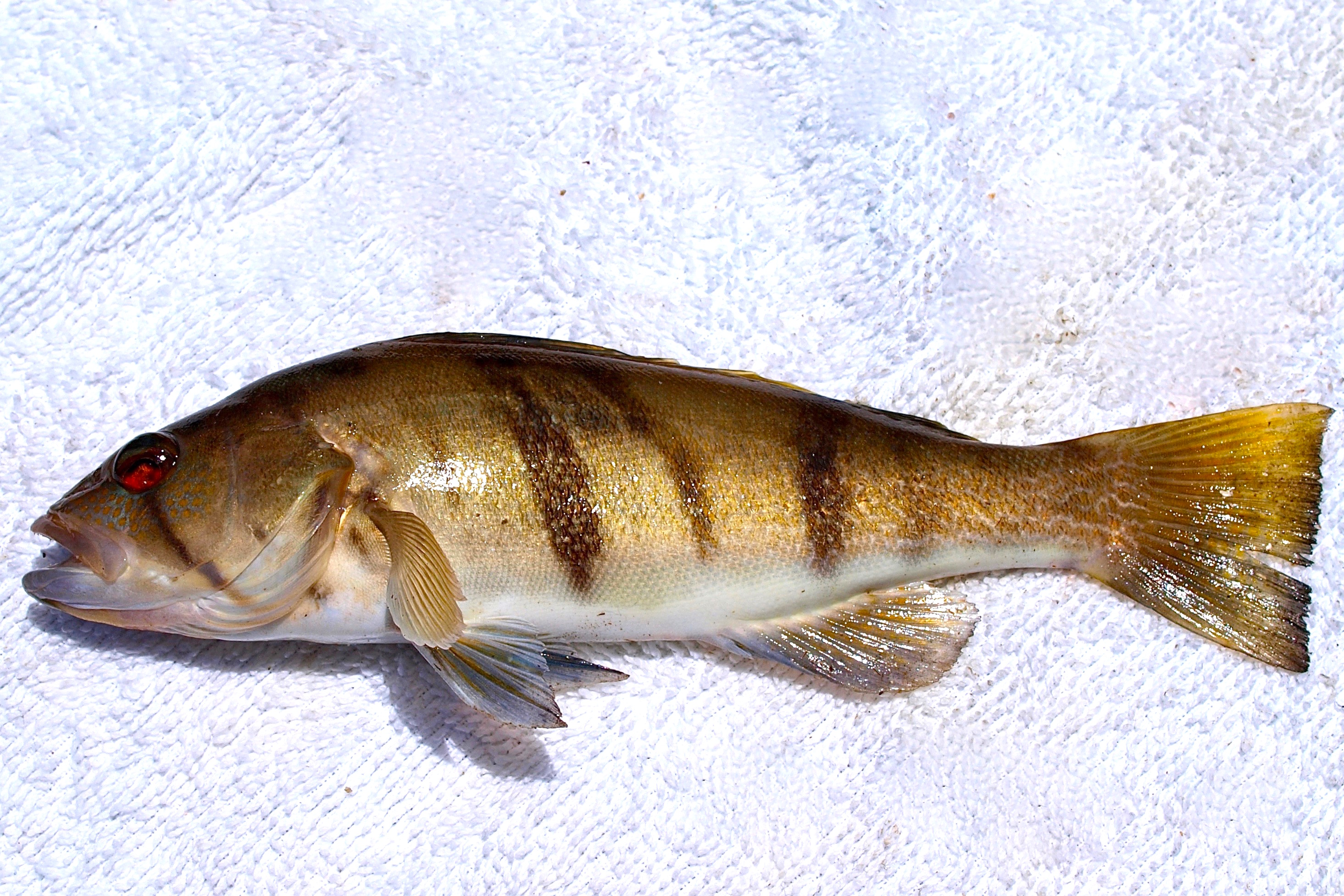
Sand bass are an uncommon catch
Most trips to the pier will also see an occasional ocean whitefish. That changed dramatically during a trip in June of 2017 that saw a large school of whitefish hanging around the pier’s waters. Roughly twenty hours of fishing over three days saw me catch 60 of the young 10-15-inch fish (the number only surpassed by the number of kelp bass). Hundreds more were caught by other anglers. You just never know.
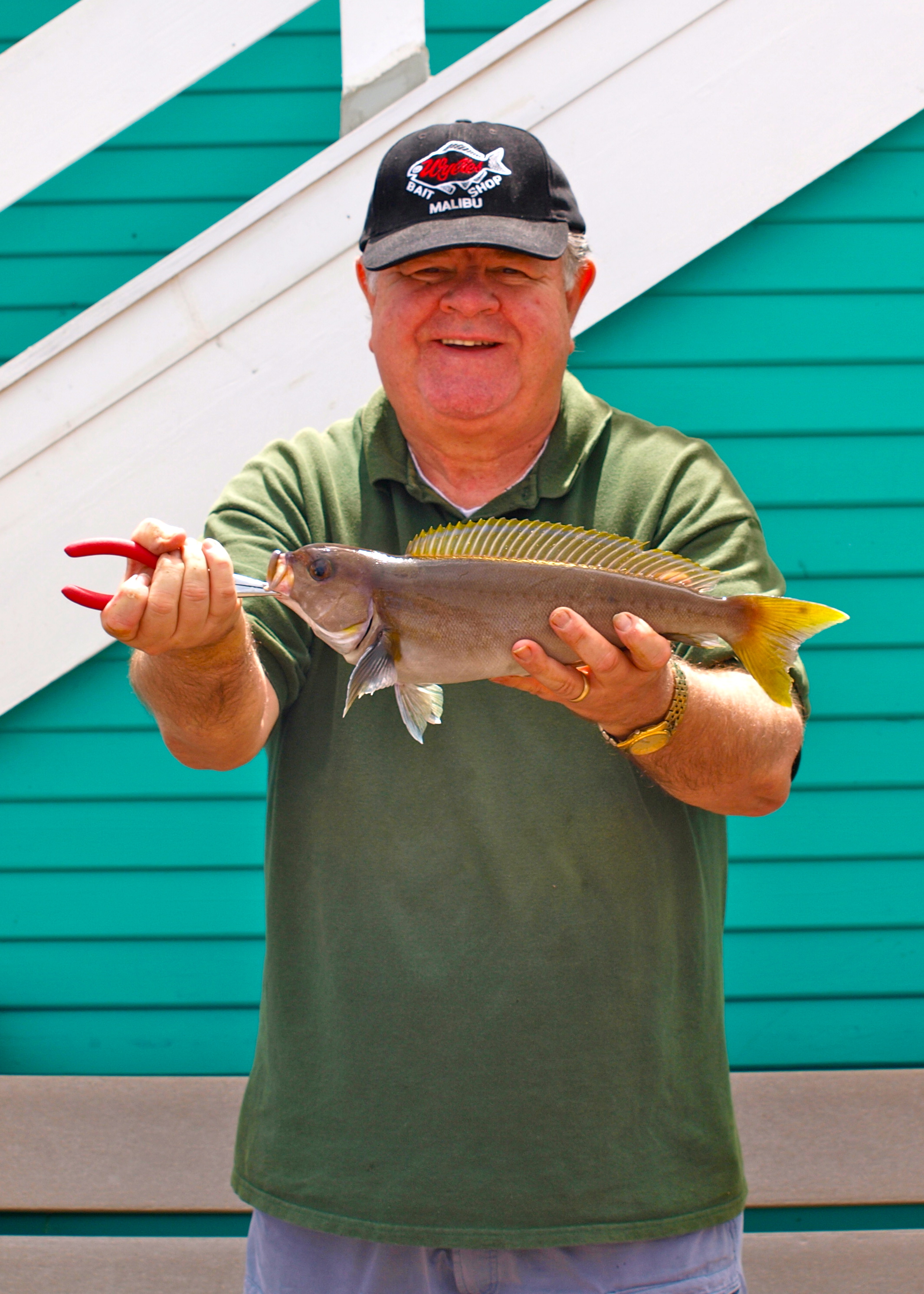
Ken Jones and an ocean whitefish
• Cephalopods — Although squid are rare to the Green Pleasure Pier, octopus are fairly common.
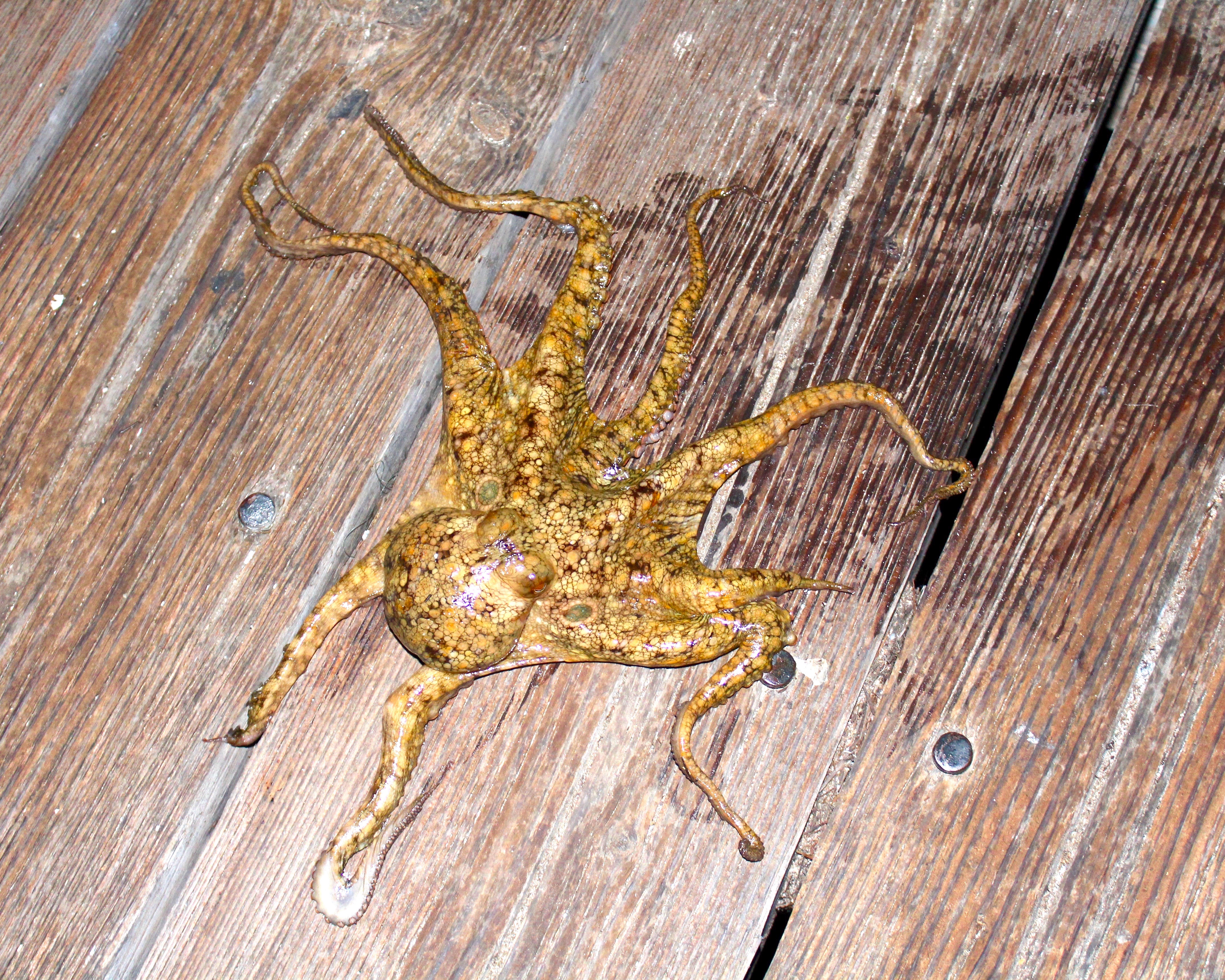
Two-spot Octopus
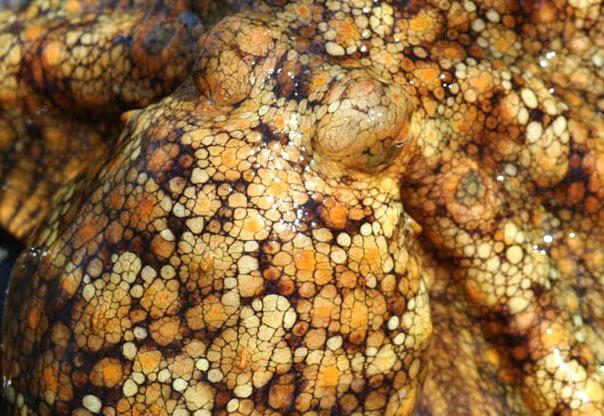
[For detailed information on riggings and bait see the article on the Cabrillo Mole]
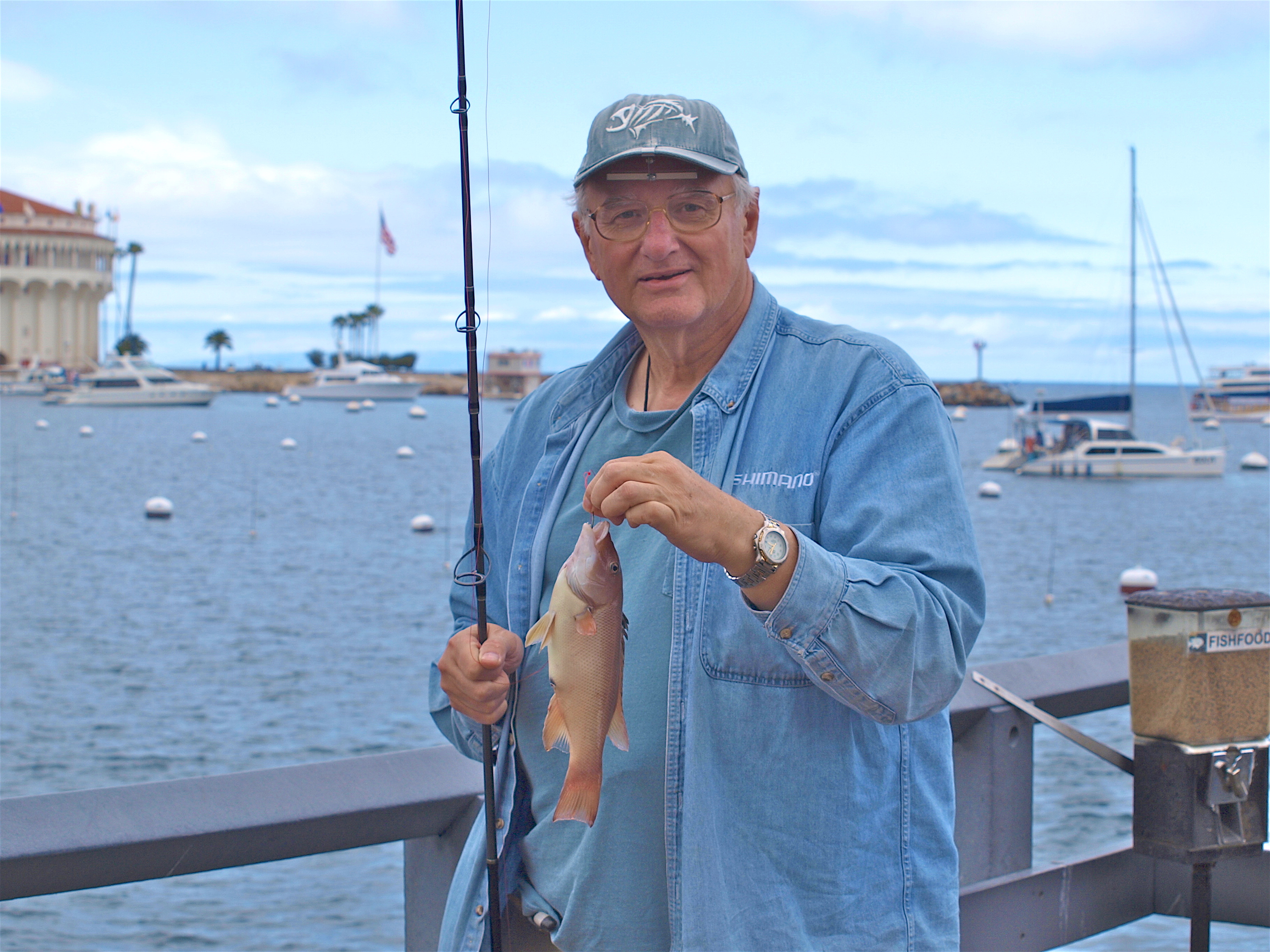
Mike Granat with a small sheephead
Potpourri — Perhaps more than you may want to know about the Green Pleasure Pier
<*}}}}}}}}}>< — My first trip to Catalina, and the Green Pleasure Pier, took place during September of 1966 during my honeymoon. The journey over from the mainland was on the S.S. Catalina a.k.a. the Big White Steamer (though it was trimmed in pink and blue) and it only cost $7.50 for a round-trip ticket. Upon arrival, the large ship docked at the Steamer Pier that used to sit just up the shoreline from the Green Pleasure Pier.
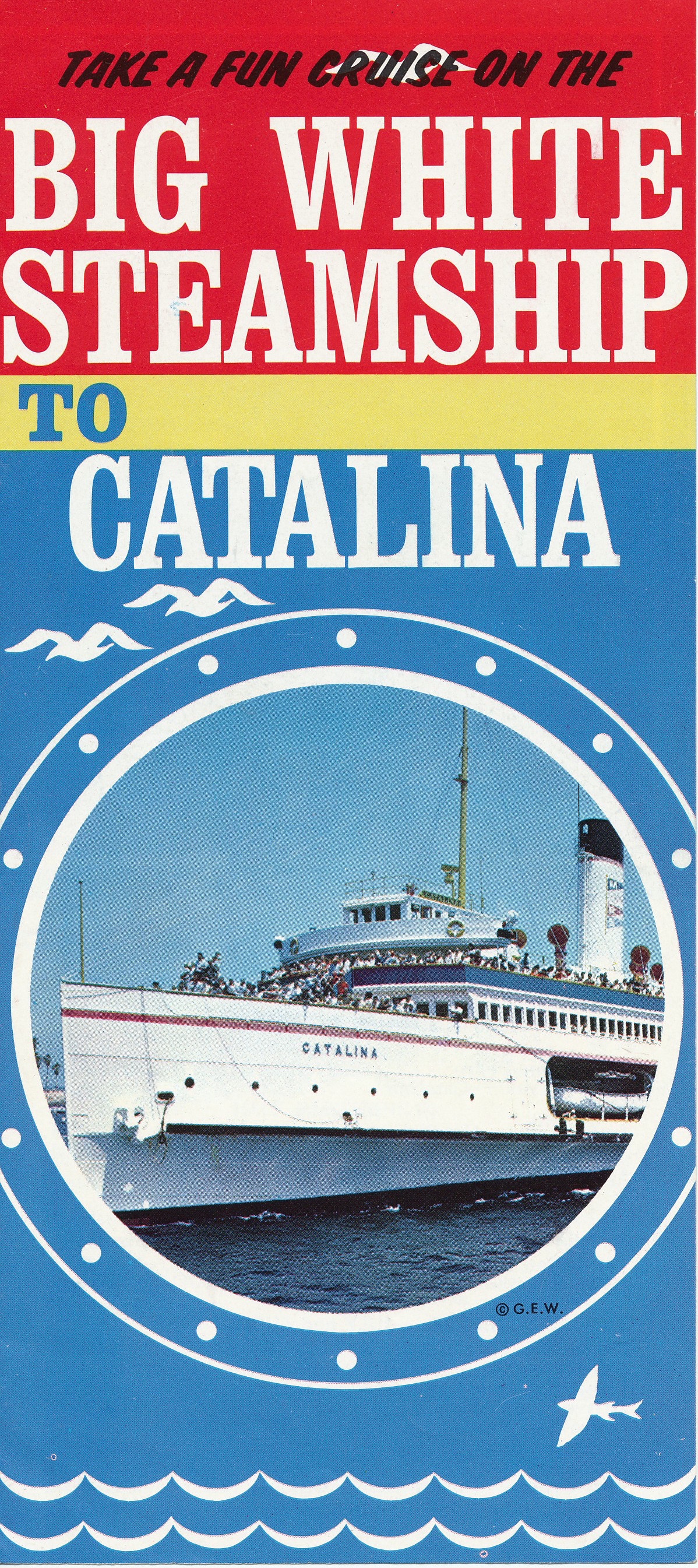
The pleasure pier itself was pretty similar to that seen today although there was far more open space from which a person could catch a fish or two (or twenty). In addition, there was a very long dock out at the end of the pier that apparently was utilized by the island’s various airlines and seaplanes over the years: Catalina Seaplanes/Catalina Golden West Airlines/Catalina Airlines N13CS Grumman G-21 Goose (that usually launched at Pebbly Beach).
On the morning after our arrival, I awoke early and found the newly crowned Mrs. Jones still asleep. What to do? Well, why not go fishing? After all, this was Avalon, one of the most famous fishing spots in California (if not the world). I slipped on some shorts and headed down to the Pleasure Pier where I fished for a half hour or so until the boat rental stand opened up. Soon after I was rowing out to deeper waters in the small skiff from which I proceeded to catch some kelp bass, mackerel, halfmoon, and ocean whitefish.
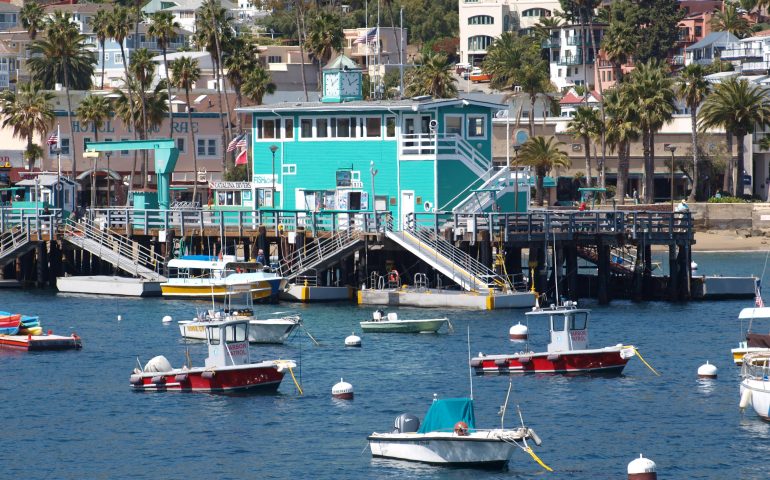
[…] the bike tour we walked around Green Pleasure Pier while we waited for our Jeep tour. We had about an hour to kill so we window shopped. You will not […]